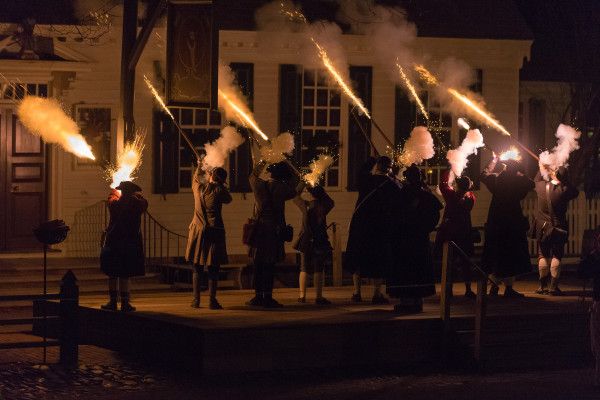
At the Governor’s Palace alone, 230 muskets—including 80 original pieces—are on display along with 18 reproduction pistols and nearly 300 reproduction swords. But that’s just a drop in the bucket when it comes to the arms and militaria collection of Colonial Williamsburg.
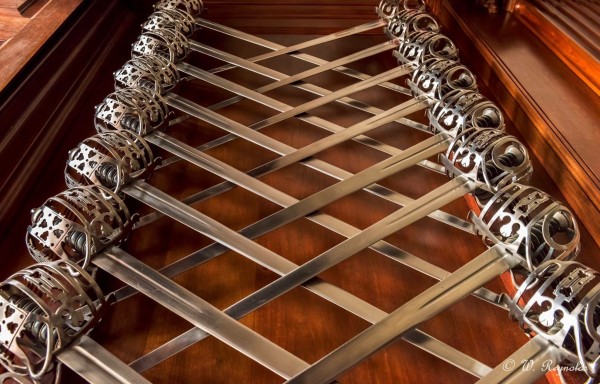 Erik Goldstein, Curator of Mechanical Arts and Numismatics (coins, paper currency, and medals), showed me some of the highlights of our rather large collection, which contains hundreds of objects the “fighting man of the colonial period carried and used.”
Erik Goldstein, Curator of Mechanical Arts and Numismatics (coins, paper currency, and medals), showed me some of the highlights of our rather large collection, which contains hundreds of objects the “fighting man of the colonial period carried and used.”
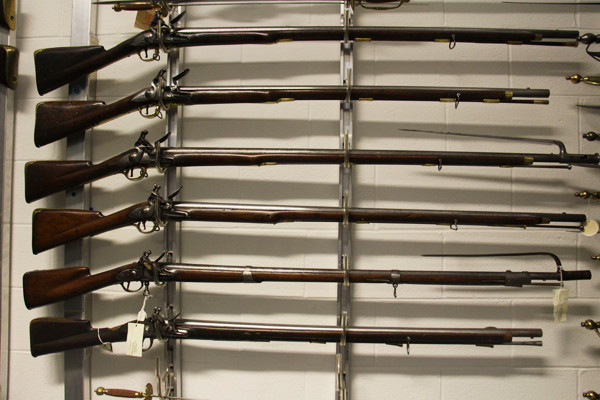
“These rare items span from tiny unit-marked uniform buttons to cannons, artwork, and even a regimental flag of the 1760 period,” he said. Colonial Williamsburg also holds a general’s uniform coat of the sort worn at the Siege of Yorktown. That still isn’t anywhere close to the amount of items we have. In fact, the collection of British military firearms is well known to be the finest and most complete in existence!
Colonial Williamsburg began collecting weapons right from the time it was founded by Dr. W.A.R. Goodwin. After World War II, when much of England was decimated by German bombs, the structure of Death Duties, or inheritance taxes, was changed in order to rebuild Britain. When the next generation inherited grand estates, many couldn’t afford to keep them and the estates were broken up. It was then many pieces went on the market. This was around the time Colonial Williamsburg acquired the Magazine, and we needed to fill it with muskets. Reproduction weapons weren’t really being made, so we had to purchase originals. Erik told me the Foundation wasn’t buying one musket at a time like one might do at a gun show. Instead, we were purchasing 20, 30, even 50 muskets and the majority were acquired between 1949 and the early 1950s.
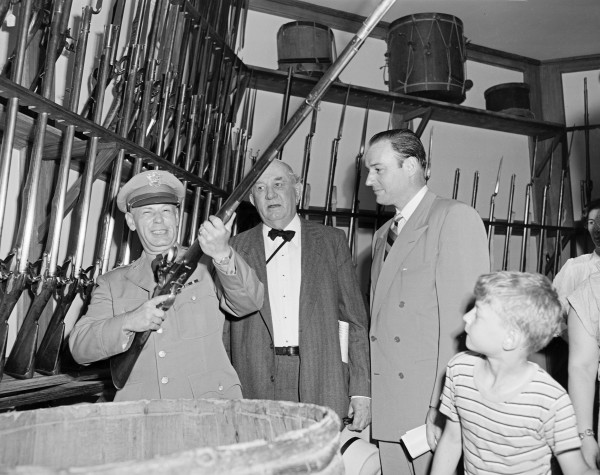
In his 14 years at the Foundation, Erik has only been able to purchase one infantry musket to fill a hole—that’s how complete the collection of British weapons is.
We currently have more than 300 longarms (which includes rifles, muskets, and fowlers) and nearly 100 pistols as well as dozens of swords dating from 1650-1820. Some of our weapons belonged to famous names of the Revolution, including Nathaniel Greene’s silver-hilted sword and a good chunk of Lord Dunmore’s gun cabinet. If you want to see those weapons, they are mostly on display in the Art Museums of Colonial Williamsburg and the Governor’s Palace. Ask your guide!
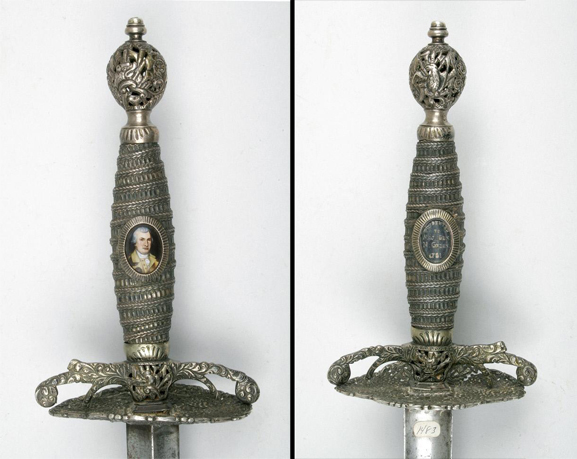
Nathaniel Greene’s silver-hilted smallsword
We also have a South Carolina Royalists belt plate, which Erik says is the only known piece of Southern military silver from the Revolutionary War as well as an unaltered French musket, which was the type of gun Ben Franklin arranged to have shipped over from France.
There are a handful of pieces Erik would like to have in the collection. For instance, he would love to acquire a sea service musket from the French and Indian War period. Erik says we currently have one from a later period, but we don’t have one from that particular time. So if you have one in your family or know where one can be acquired, let us know.
All in all, Colonial Williamsburg’s arms and militaria collection dates back to around 1600 and is rather complete. You can see many of the items on display at the Magazine or the Governor’s Palace, and there’s also an incredible exhibit on display at the Art Museums of Colonial Williamsburg called Lock, Stock, and Barrel. Stay tuned for another blog post about the exhibit!
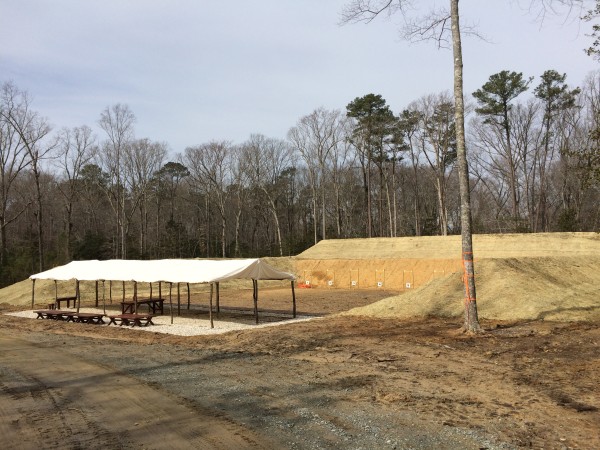
And if you just can’t get enough, you’ll have a chance to handle 18th-century firearms yourself. Colonial Williamsburg is opening its first-ever educational musket range on March 19. Guests will be able to learn about the history of flintlock weapons and how they were used in colonial Virginia as well as fire the weapons. The price of admission is $119 for ages 14 and up, and anyone under 18 must be accompanied by a parent or guardian. Admission includes instruction, safety equipment, firearms, ammunition and targets.
For more information, be sure to check colonialwilliamsburg.com or call 855-296-6627.

Thank you for your informative article! These historic arms are more than simple mementoes of our past. They illustrate many aspects of daily life as it was in the early years of British North America, as well as the social. economic, and political realities faced by the residents as the Colonies grew and expanded. They also display the advances made in manufacturing, technology, and industry over the span of those four centuries.
It has been too many years since I last visited Colonial Williamsburg. I am very excited about the educational musket range program-I believe it is time for another visit!
Incidentally, Major General Greene spelled his name Nathanael, as did his father. Although sources do show variation in the spelling, most historians now use “Nathanael” over “Nathaniel”. Some of his descendants, named after him, seem to have used the latter, more common spelling of the name. This may have contributed to the “confusion” over the proper spelling seen in some documents.
Thanks again!!
Please tell us the names of the army officer and the folks in the picture if known. And what was the occasion if special.